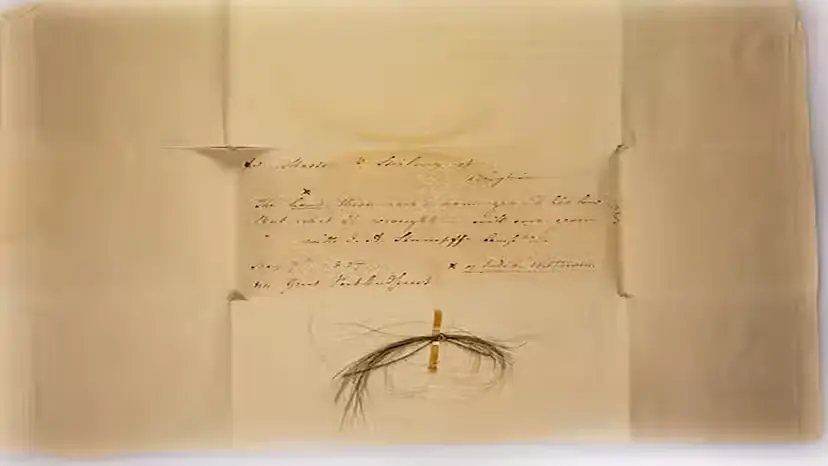
There have been a lot of incredibly inventive people whose lives were cut short for no good reason by disease. Some well-known examples include Wolfgang Amadeus Mozart, Jane Austen, Franz Schubert, and Emily Bront. Others include Johannes Vermeer.
The life of Ludwig van Beethoven was not quite as brief; he lived until the age of 56 when he passed away in 1827. However, it was only a brief glimpse, just enough to make us wonder what else he may have accomplished if he had been in better health.
Beethoven's adult life was marked by recurrent bouts of discomfort and ill health, and he also struggled with hearing loss throughout much of that time. He gave these problems, particularly his hearing loss, a great deal of consideration, and he hoped that one day they would be understood, and that the reason for them would be made known to the general public.
At other times, he became hopeless and entertained thoughts of ending his life, and at other times, he just stopped producing music completely.
On the basis of data that were kept at the time, entire books have been written about Beethoven's health. Nonetheless, my coworkers and I addressed the problem from a different angle than you might expect. We inquired about the possible hints that could be obtained from Beethoven's genome, often known as his DNA.
As we describe in recent research that has been published in Current Biology, we not only uncovered some answers but also some shocks.
The Act of Planting the Seeds
Our work together with people from other countries got its start with Tristan Begg, who was a fan of Beethoven and a student of biological anthropology at the University of California, Santa Cruz at the time.
Begg first met historical musicologist William Meredith when he was volunteering at the Ira F. Brilliant Centre for Beethoven Studies at San José State University. The centre was led by Meredith at the time.
It took eight years and the contributions of several other specialists to develop the project to the point where it was ready to be published, but the seed of the project was planted at that time. Begg, who is currently in his final year of earning his Ph.D. at the University of Cambridge, is the only individual who has worked full-time on the project despite all of the complicated multidisciplinary interactions that have taken place.
Who or what was the source of the DNA?
The process of extracting and analysing DNA from the remains of a deceased person (or other animal) is far more difficult than the process of doing so from living tissue. Despite this, significant leaps forward in technology have completely reshaped the area of ancient DNA research.
The petrous bone in the skull and the teeth are typically considered to be the best sources of DNA from human remains; however, neither Beethoven's bones nor his teeth were available to us for analysis.
It was only hair that was available. It was standard practise during Beethoven's time to gather tresses of hair from notable persons or loved ones. There are dozens of locks that are said to be Beethoven's that are held in collections both public and private.
BEETHOVEN’S HAIR REVEALS HIS CAUSE OF DEATH
— Traducción médica (@tradumedic) March 28, 2023
DNA extracted from 200-year-old locks of Ludwig van Beethoven’s hair has given geneticists clues about why the composer died: he was particularly susceptible to liver disease. https://t.co/H1KLd6tMOi pic.twitter.com/c8qYE3mzc9
However, DNA extraction from hair that does not contain roots is a more difficult process. This DNA typically occurs in short sequences that are occasionally in a degraded state. In order to piece together as much of a whole genome sequence as possible from them, tedious work with specialised computer software is required.
How Can We Be Sure That Beethoven Owned Those Locks?

Our approach utilised sounds from eight different locks credited to Beethoven that were sourced separately. Five of these provided DNA from the same male individual, and the levels of damage were compatible with origins in the early 19th century. These DNA samples were found in five different artefacts.
Through collaboration with the genealogy company FamilyTreeDNA, we were able to determine that this individual's roots lie in western-central Europe. Due to the fact that two of the locks continue to be in existence alongside unbroken provenance records dating as far back as the 1820s, we are certain that it is Beethoven.
In addition to the first two locks, there were three others that shared a genetic make-up with them and had good provenance records (albeit they were not entirely uninterrupted).
It is quite impossible to question that Beethoven's hair was used in these samples due to the fact that their provenances have been meticulously recorded and that there is perfect genetic agreement amongst five sampless obtained from different sources.
Related link : William Walker, a mercenary from the United States, proclaimed himself president of Nicaragua in 1875.
That brought us down to three strands of hair. Two of these stood out from the other five in terms of their clear genetic distinctions: One of them belongs to a lady. We are unable to explain the circumstances surrounding the attribution of these works to Beethoven.
One of the misunderstandings is notable in its own right due to the fact that it served as the foundation for earlier studies that came to the conclusion that Beethoven had been subjected to lead poisoning. Our research demonstrates that this conclusion is no longer valid.
The ninth lock produced such a negligible amount of DNA that it cannot be verified as authentic or not.
What We Have Learned Regarding Beethoven's Physical Condition
We did not anticipate discovering a genetic basis for Beethoven's most well-known health issue, which is his hearing loss, and our expectations were confirmed by the findings. Beethoven suffered from adult-onset hearing loss, a condition that can only rarely be attributed to largely genetic factors because it is so uncommon.
However, he suffered for many years from a variety of other health issues, most notably issues related to his gastrointestinal tract (including discomfort and diarrhoea) and liver illness.
Through our collaboration with the medical genetics team at Bonn University, we were able to determine that Beethoven does not have a hereditary predisposition towards any particular gastrointestinal problem, such as inflammatory bowel disease, irritable bowel syndrome, coeliac disease, or lactose intolerance (as some people have speculated). The majority of our findings concerned diseases of the liver.
Because of the paperwork, we were previously aware that Beethoven suffered from jaundice bouts. As a result of Begg's research, it has been established that Beethoven has two copies of a specific variation of the PNPLA3 gene, which is associated with liver cirrhosis. In addition to this, he possessed only one copy of each version of a gene that is responsible for the disorder known as hemochromatosis, which is harmful to the liver.
Unbelievably, the tests also showed that Beethoven had the hepatitis B virus in his body during the last few months of his life (and possibly much earlier). Although there is little information available, it is possible that hepatitis B infection was widespread in Europe during this time period.
Additionally, it is possible that Beethoven's usage of alcohol increased his risk of developing liver illness. There has been debate on the volume and type of his alcohol usage, which is mentioned in the records that have survived but is not quantified in any way. Despite this, the records have been the subject of controversy.
Begg came to the conclusion after a comprehensive analysis of the documents that Beethoven's alcohol consumption was likely normal for the time and location, but it is possible that it was still at levels that are now deemed dangerous.
Discoveries Made by Members of the Beethoven Family

One more shock was waiting for us when we finished eating. As part of our research, we attempted to establish a connection between Beethoven's genome and the genomes of surviving Beethoven family members. In order to accomplish this, we concentrated on the Y chromosome, which is passed down exclusively through males (in a manner that is analogous to the transmission of surnames in the majority of European cultures).
The DNA samples were provided by five different individuals with the surname Beethoven. They were not closely related to one another and were residing in the country that is now known as Belgium, which is the country from where the surname comes. They all basically inherited the same Y chromosome, which may be attributed to their origin from a single male ancestor who lived between the years 1535 and 1609 and was named Aert van Beethoven.
The fact that Ludwig van Beethoven's hair contained a distinct Y chromosome was a pleasant surprise. After looking into various possibilities, we came to the conclusion that over the seven generations that passed between Aert and Ludwig, someone who was believed to be a person's father for social and legal purposes was not actually that person's biological father.
However, based on the data that was presented to us, we were unable to determine which generation this might have belonged to.
What Should I Do Now?
Because there is a possibility that further information can be gleaned through additional research, we have decided to make the genome that we sequenced available to the general public.
In the sphere of DNA analysis, our effort is an illustration of the greater possibilities that are becoming available beyond Beethoven. This demonstrates that substantial results can be produced even from DNA sources as seemingly unpromising as ancient hair locks.
To this day, population genetics has only infrequently conducted investigations at the level of a single individual. This is not an easy task, but we have demonstrated that it is not impossible.
Who knows what will happen next? Possibly another individual concerning whom there is a specific question to be answered, or even an individual who may have wished to have had that question answered on their own behalf.

